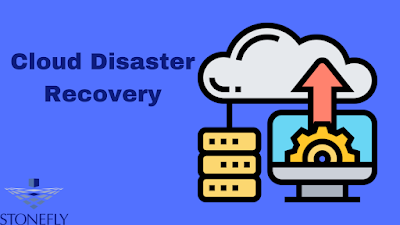Harness the Power of Cloud Disaster Recovery! Benefits and Some Drawbacks
Cloud Disaster Recovery (CDR) is a powerful and often cost-effective tool for businesses to protect their data in the event of a disaster. Leveraging cloud technology, CDR can help you quickly and securely restore your data with ease. It eliminates the need for long backups, minimizes downtime, and ensures continuity of operations during times of crisis. While its many benefits make it an appealing solution for businesses, it does have some drawbacks that should be taken into account when considering whether or not to implement it.
What is Cloud DR?
Cloud Disaster Recovery (CDR) is a process of using cloud
computing technologies to back up and recover data in the event of a disaster. It
is used to protect business data, applications, and other digital assets from
physical damage such as natural disasters, hardware failure, cyberattacks, or
any other type of incident that could lead to data loss.
How Does it Works?
Cloud Disaster Recovery works by creating replicas of
virtualized systems in a cloud-based environment that can be quickly and easily
accessed in the event of an incident. During times of crisis, these replicas
are used to restore operations and resume normal business functions. This
allows businesses to continue operating without long delays or loss of data.
What Are the Benefits of Cloud DR?
Cloud Disaster Recovery offers numerous benefits for
businesses. These include:
• Reduced Downtime –
With cloud backups, operations can be resumed in a fraction
of the time it would take to restore from traditional backups.
• Cost Savings –
By leveraging the efficiencies of cloud computing,
businesses can save money on hardware costs, staff, and IT resources.
• Scalability –
Cloud Disaster Recovery allows businesses to scale up or
down their backup storage needs as needed. This allows them to always have the
most up-to-date data available in case of an emergency.
• Security –
Cloud backups are stored securely in the cloud, meaning they
can’t be compromised by physical damage or malicious actors.
What Are the Drawbacks of Cloud DR?
While there are numerous benefits to using Cloud Disaster
Recovery, there are also some drawbacks that should be taken into account when
considering whether or not to implement it. These include:
• Data Latency –
Due to the transmission time required to move data between
different cloud providers, there may be a lag in accessing the most up-to-date
data.
• Reliability –
Cloud services can be unreliable at times due to network or
hardware outages. This could affect the reliability of your backup system.
• Cost –
Cloud storage costs can add up quickly and can be more
expensive than traditional backups in some cases.
Conclusion
Cloud Disaster Recovery is an effective and often
cost-efficient way to protect businesses from data loss in the event of
disaster. Its numerous benefits, such as reduced downtime and scalability, make
it an attractive option for businesses looking to ensure continuity of
operations during times of crisis. While there are some drawbacks associated
with Cloud DR, they can be minimized with careful planning and implementation.
Ultimately, Cloud Disaster Recovery is a powerful tool that can help businesses
protect their data and ensure business continuity during times of crisis.
FAQs
1. What is Cloud Disaster Recovery?
Cloud Disaster Recovery (CDR) is a process of using cloud
computing technologies to back up and recover data in the event of a disaster.
It is used to protect business data, applications, and other digital assets
from physical damage such as natural disasters, hardware failure, cyberattacks,
or any other type of incident that could lead to data loss.
2. How does Cloud Disaster Recovery work?
Cloud Disaster Recovery works by creating replicas of
virtualized systems in a cloud-based environment that can be quickly and easily
accessed in the event of an incident. During times of crisis, these replicas
are used to restore operations and resume normal business functions.



Comments
Post a Comment